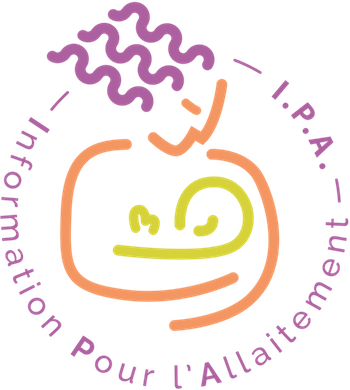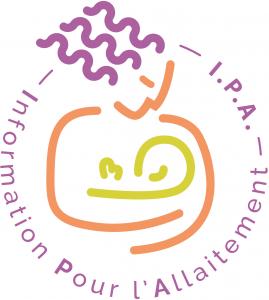Catégories
 > Physiologie > Physiologie nutrition > Composition du lait > Composition du lait maternel > Physiologie > Physiologie nutrition > Composition du lait > Composition du lait maternel
Composition du lait maternel |
Documents disponibles dans cette catégorie (192)
Article : texte imprimé
Background: Bisphenol A (BPA) is generally considered to be an endocrine disruptor. Previous reports indicate that the BPA content in breast milk is higher than that in serum; however, BPA is considered to be excreted in the urine and not to ac[...]Article : texte imprimé
Ahlam M. Ismail, Auteur ; Gihan M. Babers, Auteur ; Mahmoud A. El Rehany, Auteur |Background: Human milk contains leukocytes expressing brain-derived neurotrophic factor (BDNF), which may facilitate epileptogenesis. Our study aimed to estimate levels of BDNF in the sera of breastfed infants with idiopathic epilepsy and in bre[...]Article : texte imprimé
Yesim Ozarda, Auteur ; Mehmet Cansev, Auteur ; Ismail H. Ulus, Auteur |Background: Choline is an important component of human breast milk and its content varies considerably among breastfeeding women and lactation periods. Objective: The aim of this study was to assess the relationship between breast milk chol[...]Article : texte imprimé
The benefits of breast milk are well established for preterm and healthy term infants, yet much less is known regarding the impact of breast milk and its associated lipids on the treatment of diseases in infant and pediatric populations. Disease[...]Article : document cartographique imprimé
Kim Seong-Min, Auteur ; Kim Jihoe, Auteur ; Choi Inho, Auteur |Background: It is well known that breast milk is the best nutritional source for infant growth. However, there has been no information about the quality of breast milk from individuals who daily consume a trans fatty acid (TFA)-enriched diet. [...]Article : texte imprimé
Ramzi Shawahna, Auteur ; Ahed Zyoud, Auteur ; Jamela Dwikat, Auteur |Background: Lead is a neurotoxic pollutant that is ubiquitously spread in our environment. Breast milk contaminated with lead poses a potential risk of exposing a recipient infant to lead. Objectives: The primary aims of this study were to [...]Article : texte imprimé
The most commonly used antirejection drugs used after organ transplantation, cyclosporine, tacrolimus, corticosteroids, azathioprine and probably rituximab, are acceptable during breastfeeding. However, they should be used with caution while nur[...]Article : texte imprimé
The short-term benefits of breastfeeding have been well established. Among infants 0–5 months of age, the risk of all-cause mortality has been estimated to be 14 times higher in nonbreastfed infants compared with exclusively breastfed infants.1 [...]texte imprimé
Article : texte imprimé
Most drugs used in the treatment of inflammatory bowel disease are compatible with breastfeeding. One exception is tofacitinib that requires cessation of breastfeeding if it is used. The use of weekly methotrexate is controversial. Although no a[...]Article : texte imprimé
Jumpei Saito, Auteur ; Mariko Ishii, Auteur ; Yoriko Miura, Auteur |Background: Brotizolam is a sedative-hypnotic thienotriazolodiazepine that is a benzodiazepine analog used for debilitating insomnia. Anxiety, depression, and sleep disorders occur in about 15% of pregnant and lactating women; however, no studie[...]Article : texte imprimé
Hélène Billard, Auteur ; Laure Simon, Auteur ; Emmanuelle Desnots, Auteur |Background: Human milk composition analysis seems essential to adapt human milk fortification for preterm neonates. The Miris human milk analyzer (HMA), based on mid-infrared methodology, is convenient for a unique determination of macronutrien[...]Article : texte imprimé
Nimah Bahreini-Esfahani, Auteur ; Amir Rez Moravejolahkami, Auteur |Background: Human milk potentially includes probiotic Lactobacillales, an order of gram-positive bacteria that have the ability to ferment sugars to lactic acid. These bioactive agents may be affected by maternal dietary patterns. This study aim[...]Article : texte imprimé
Article : texte imprimé
Article : texte imprimé
Ann Witt, Auteur ; Mary Jane Mason, Auteur ; Kelly Burgess, Auteur |Background: An infectious etiology for chronic breast pain in breastfeeding women continues to be debated. Although recent data suggest that Staphylococcus aureus and coagulase-negative Staphylococcus (CNS) may cause chronic breast pain, no stud[...]Article : texte imprimé
Sharon Lisa Perrella, Auteur ; Donna Tracy Geddes, Auteur |High infant weight gain is associated with subsequent overweight and obesity and so may contribute to related comorbidities such as metabolic syndrome and cardiovascular disease. The growth acceleration hypothesis proposes that early and rapid g[...]Article : texte imprimé
Pankaj Kaingade, Auteur ; Indumathi Somasundaram, Auteur ; Akshita Sharma, Auteur |Purpose and Study Objective: Whether the preterm mothers' mature milk retains the same cellular components as those in colostrum including stem-like cell, cell adhesion molecules, and immune cells. Participants: A total of five preterm mother[...]Article : texte imprimé
Shujuan Li, Auteur ; Lan Zhang, Auteur ; Qi Zhou, Auteur ; Siyuan Jiang, Auteur ; Yi Yang, Auteur ; Yun Cao, Auteur |Background: Human milk is known to be rich in cellular components, including stem cells and immune cells. However, the dynamics of these cellular components at different lactation stages, and the differences between milk for preterm and term in[...]Article : texte imprimé
Jennifer C. Hartle, Auteur ; Ronald S. Cohen, Auteur ; Pauline Sakamoto, Auteur |Background: Environmental contaminants ranging from legacy chemicals like p,p’-dichlorodiphenyltrichloroethane (DDT) to emerging chemicals like phthalates are ubiquitous. Research aims/questions: This research aims to examine the presence a[...]Article : texte imprimé
Hadar Moran-Lev, Auteur ; Françis B. Mimouni, Auteur ; Amit Ovental, Auteur |Background: Little is known about circadian variations of macronutrients content of expressed preterm human milk (HM). This study evaluated diurnal variations of macronutrients and energy content of preterm HM over the first 7 weeks of lactation[...]Article : texte imprimé
Several components of breast milk show circadian variability. It is likely that at least some of these macronutrients, hormones, and micronutrients produce circadian stimuli that enhance the well-being of breast-fed infants. Future research shou[...]Article : texte imprimé
Paolo Manzoni, Auteur |Human milk contains many bioactive factors that support organ development, contribute to the maturation of the immune system, and provide protection against neonatal infection and diseases, such as bronchopulmonary disease, retinopathy of premat[...]Article : texte imprimé
Gagan Priya, Auteur ; Sanjay Kalra, Auteur ; Ei Mon Phyo Lwin, Auteur ; Madeline E. Duke, Auteur |Article : texte imprimé
Philip O. Anderson, Auteur ; Palika Datta, Auteur ; Peter Gerrit Johannes ter Horst, Auteur |

























